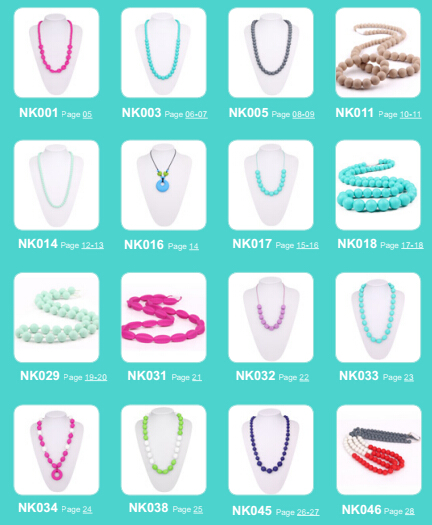Sun Shuwen Xia Huanxiong Tian Yue Beijing University of Technology Beijing 100124
Abstract: On the basis of introducing the structure and function of the experimental platform of the planar 2DOF dual-rail parallel mechanism, this paper focuses on the method of designing the main controller using the TMS320F2812-DSP chip and the stepper motor driver using the THB7128, and details the monitoring of the host computer. Software functions and interface layout. The monitoring computer communicates with the main controller through the CAN-USB adapter to form a master-slave control network, which can realize the analysis and download of control motion instructions, and can also monitor the movement track of the mechanism in real time.
Keywords: parallel mechanism; DSP; CAN bus; stepper motor
At present, in the machinery industry, CNC machine tools and industrial robots, as typical products of electromechanical integration, are widely used, greatly improving the accuracy, speed and efficiency of industrial product manufacturing. Its core technology, the development of numerical control (CNC) technology, is changing with each passing day. With the continuous development of modern CNC technology, its continuous improvement in the industrial production process and the country's huge investment in CNC technology research, CNC technology has become a hot research field. It can be said that the level of CNC technology is an important symbol of a country's advanced manufacturing industry. From the actual situation, China's industrial enterprises urgently need engineering talents who master CNC technology. However, in order to carry out the teaching and scientific research related to CNC technology in the mechatronics laboratory, it is restricted by many conditions. Unable to meet the practical requirements of teaching and scientific research. How to find a suitable way and technology platform to carry out the teaching and research of CNC technology in the laboratory can be said to be a brand-new subject. For the control of simple tandem mechanisms or robots, the application in the laboratory is greatly restricted, which is extremely incompatible with the current important position of numerical control technology in advanced manufacturing and its rapid development in recent years. In response to this situation, this paper proposes a design and implementation of a planar 2DOF dual-rail parallel mechanism experimental platform based on DSP. Students can make full use of this platform to complete a series of control experiments such as: digital control, graphic analysis, interpolation algorithm, motion analysis, human-machine interface (HMI) monitoring through the computer and CAN bus network.
1. Structure and function of the experimental platform of the double-track parallel mechanism The structure diagram of the experimental platform of the double-track parallel mechanism is shown in Figure 1. Mainly includes the host computer monitoring software, controller, driver, position detection and double-track parallel actuator.
1. The host computer monitoring software platform provides a path generation window, a workbench monitoring window and a motion performance observation window. It mainly completes trajectory data planning and control data generation, as well as related command sending and status monitoring; it is a human-machine interface for user control and monitoring of table movement.
2. The controller uses DSP as the main control chip and provides a CAN communication interface connected with the host computer, a JTAG interface for programming and debugging, a driver pulse signal control interface, and a photoelectric encoder position detection signal interface. Its main task is to receive the trajectory control data and control instructions generated by the host computer, control the motor movement through the driver, and upload the position and status information of the motion mechanism in real time.
3. The driver provides a driving pulse control signal receiving interface and a two-phase hybrid stepping motor interface. Its main task is to receive the pulse, direction and enable signals of the controller and drive the two-phase hybrid stepper motor to move.
4. The position detection link uses E6B3-CWZ6C 5V, 1000P / R incremental photoelectric encoder, which is used to feedback the angular displacement of the motor of the experimental workbench.
5. The double-track parallel actuator completes the movement of the experimental platform. It mainly includes biaxial stepper motor, parallel guide rail, slider, guide rod, execution end, timing belt, tensioning mechanism, frame, etc.
The basic function of the dual-rail parallel mechanism experiment platform (as shown in Figure 2): the user selects the path generation method and draws the path in the path generation window of the host computer, and then calculates the path through the software to generate path data, which can be simulated or download. When the user chooses to download data, the generated path data will be downloaded to the DSP controller through the CAN bus; the controller generates PWM pulse signals, direction signals and enable signals according to the control data; the dual-axis driver receives this signal and controls it through the driver chip The two-track two-phase stepper motor coordinated action; the stepper motor drives the slider on the guide rail by synchronous belt; the slider drives the guide rod articulated with it; the coordinated cooperation of the two-track slider motion can control the execution end according to the planned Trajectory movement; the photoelectric encoder feeds the angular displacement of the stepper motor to the DSP controller while the stepper motor of the workbench moves. The DSP controller performs feedback adjustment and calculates the position information of the workbench, and then uploads it to the control software through the CAN bus , Generate the real-time running animation of the current workbench in the monitoring window, and generate the running speed and acceleration curve of the important parts of the workbench in the motion performance observation window.
Second, the design and implementation of the controller and driver The controller and driver are the design core of the dual-rail parallel mechanism experimental platform, and its performance directly affects the success or failure of the entire experimental platform. The controller adopts TMS320F2812 chip of TI Company, and the core driver chip used by the driver is THB7128 provided by Sanyo Company.
1. The design of the controller THB7128TMS320F2812 DSP is a high-performance, low-power 32-bit fixed-point DSP chip provided by TI. The chip uses the Harvard structure and has a processing speed of 150MIPS / MHz. Two independent event managers EVA / EVB and an enhanced eCAN module; its event manager has a PWM pulse circuit and QEP quadrature encoding circuit, and these are programmable; its eCAN module is fully compatible with the CAN2.0 standard and has a communication capability of up to 1Mbps / 40m , Its reliability and stability can be well adapted to the harsh environment requirements of industrial control occasions. The controller uses 5V power supply, and generates the 3.3V and 1.8V voltages required by the DSP through the TPS70151 power management chip. The communication between the controller and the host computer uses the eCAN module, and the communication transceiver chip uses the VP232 3.3VCAN transceiver. The driver interface signal level conversion chip uses a 74LS245 bus channel chip.
2. The stepping motor of the experimental platform of the driver design is a 23HS2003 type two-phase hybrid stepping motor produced by Stone Co., Ltd. The maximum speed of the stepping motor is 450r / min, the step angle is 1.8º, and the working voltage is 24V ~ 40V , Current 0.5 ~ 3A. The design of the driver should be able to meet the requirements of the stepper motor. The core driver chip is the THB7128 high-power, high-division two-phase hybrid stepper motor driver chip selected by Sanyo. The chip is driven by dual full-bridge MOSFETs, with an on-resistance of 0.53Ω, a maximum withstand voltage of 40V (DC), and a peak current of 3.3A; with a variety of subdivision options (1, 1/2, 1/4, 1/8, 1 / 16, 1/32, 1/64, 1/128), automatic half-current lock function, built-in hybrid attenuation mode, built-in input pull-down resistor, built-in temperature protection and over-current protection and other functions.
3. HMI design and implementation The monitoring software is written in C #, and the Matlab algorithm is nested inside. The monitoring interface is mainly composed of basic toolbar, drawing planning path or graphics window, motion observation window, motion tracking window, interface function settings, motion observation settings, communication settings, and data flow status monitoring. Its structure is shown in Figure 3.
In the drawing of the planning path or the graphics window, the user provides a variety of drawing methods, which can be selected by right-clicking the mouse, including: drawing any curve with the mouse, calling data files, and drawing regular curves by drawing feature points. Figure 3 demonstrates the results of drawing data files.
The motion observation window can observe the speed and acceleration of the three characteristic points of the mechanism in operation. The motion tracking window is a read-only window that tracks the mechanism in real time and draws the trajectory of the end point of the mechanism.
For function setting, users can use software-related functions as needed, such as selecting "real-time" or "simulation", whether to compare the planned path and actual data at the end of the organization, and whether to allow mouse operation. The motion observation setting is used to set the motion observation mode. The user can select a specific point of the observation mechanism, observe all 3 feature points during the default operation, and can also zoom the observed coordinate system with two degrees of freedom.
Communication settings, used to set CAN communication parameters, such as baud rate, message length, controlled node ID, message filtering, communication switch, etc. There is also a status indicator used to display the monitored communication status. When the communication is normal, the green background flashes; when the communication is abnormal, the background of the status label is red and does not flash. The reason for the communication abnormality is indicated in the status label. If it is not known Anomalies are marked with "errors".
Data stream monitoring status indicator, used to display upload, download or command. The upload status and the number of uploaded messages are displayed during upload, the download status and the number of downloaded messages are displayed during download, and when the transmission command is controlled, if the response is received, the status bar is marked with relevant text to inform the user that the command has been responded.
System start and stop control buttons, whether in simulation or in real-time monitoring, users can randomly start and pause the entire system.
The relevant multiplexing button has been marked in the bottom label of the software. The keys associated with the software are also shielded. For example, when the user has turned on the CAN bus normally, the "open CAN" button will become inoperable, and the same is true of other things. This can avoid user misoperation.
4. Commissioning of the experimental platform of the dual-track parallel mechanism Connect the various parts of the experimental platform of the parallel mechanism as shown in Figure 1, turn on the power, turn on the host computer and run the monitoring software, set the communication parameters, select the trajectory, click the stop button, The actuator will move according to the specified trajectory, and it can also observe the movement status of the trajectory in real time in the trajectory window.
During the commissioning operation, the mechanism runs smoothly, can respond to the control of the host computer monitoring platform, the driver works normally, and the stepper motor has no noise. The experimental platform can download a data at a time to complete a stroke of any complexity within 1300 points. Through multiple measurements, when the mechanism itself has errors, the position repeat error and positioning error are both less than 1mm, and there is no cumulative error. The running track of the end of the experimental platform mechanism is basically consistent with the track planned by the host computer monitoring software. Figure 4 shows the comparison between the trajectory drawn by the mechanism and the trajectory planned by the host computer monitoring software.
V. Conclusion This paper applies an advanced control system structure concept: a distributed control system based on PC and CAN bus is used in the design of the planar 2DOF double-track parallel mechanism experimental platform. After debugging, the normal communication between the monitoring computer and the DSP main controller is realized, and the selected stepping motor can be stably controlled by the driver. The operator can download control instructions through the monitoring interface, and can monitor the movement track in real time. It provides an open experimental platform for practical teaching of CNC technology, field bus technology and other courses.
References [1] Sun Shuwen, Yang Jianwu, Zhang Huihui, etc. Design and Implementation of Mechatronics Teaching and Training System [J]. China Modern Education Equipment, 2007, 6: 79 ~ 80, 84
[2] Liu Baoting, Cheng Shukang. Stepper motor and its drive control system [M]. Heilongjiang: Harbin Institute of Technology Press, 1999
[3] Dong Lei. DSP principle and motor control system application [M]. Beijing: Beijing University of Aeronautics and Astronautics Press, 2007
[4] Xie Baochang, Ren Yongde. DSP control technology of motor and its application [M]. Beijing: Beijing University of Aeronautics and Astronautics Press, 2005
* This article is an open fund project of Beijing Key Laboratory of Advanced Manufacturing Technology, Beijing University of Technology.
Our Baby Teething Necklace are made of 100% food grade Silicone Beads , FDA, BPA free, EN71, certification approved,
they are very safe material for baby, and we have various of designs available, OEM, ODM order accepted, so you can always
find one style that you loved no matter what kind of fashion mom you are.
We are pround of trust by all our customers like, Nuby, NUK, The Honest Company, Target, Wal-mart and etc for over 8 years,
we are producing our products to help more babies in this world have a happy teething period, hope our teething products can
be a very good memories for all babies after thir grow up, let do this together, pls contact our sales for more information.





For More: Silicone teething necklace, Silicone baby teether, Baby Teething Toys, Silicone Teething Beads.
Baby Teething Necklace
Baby Teething Necklace,Teething Necklace,Teething Jewelry,Silicone Teething Necklace
Shenzhen Kean Silicone Product Co., Ltd. , https://www.keansilicon.com